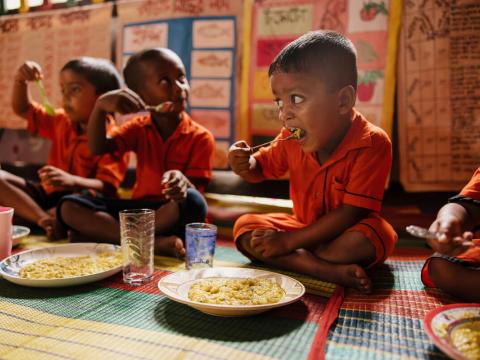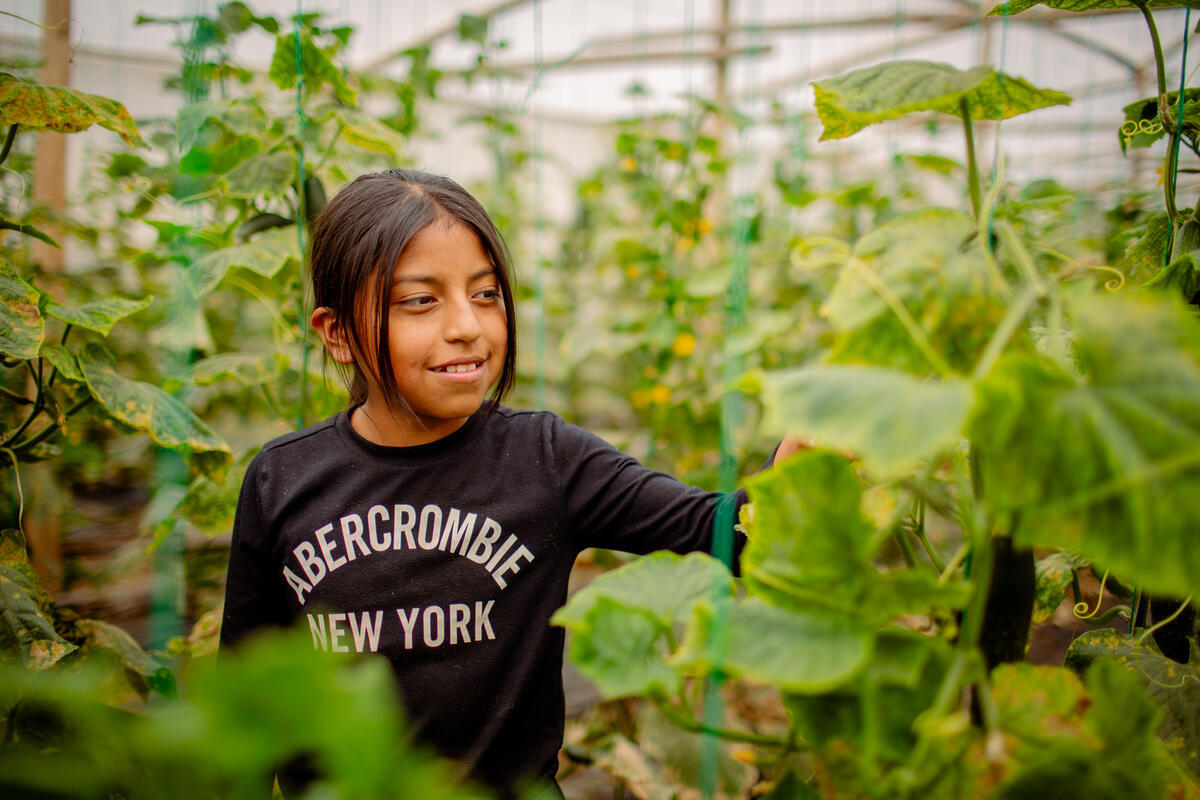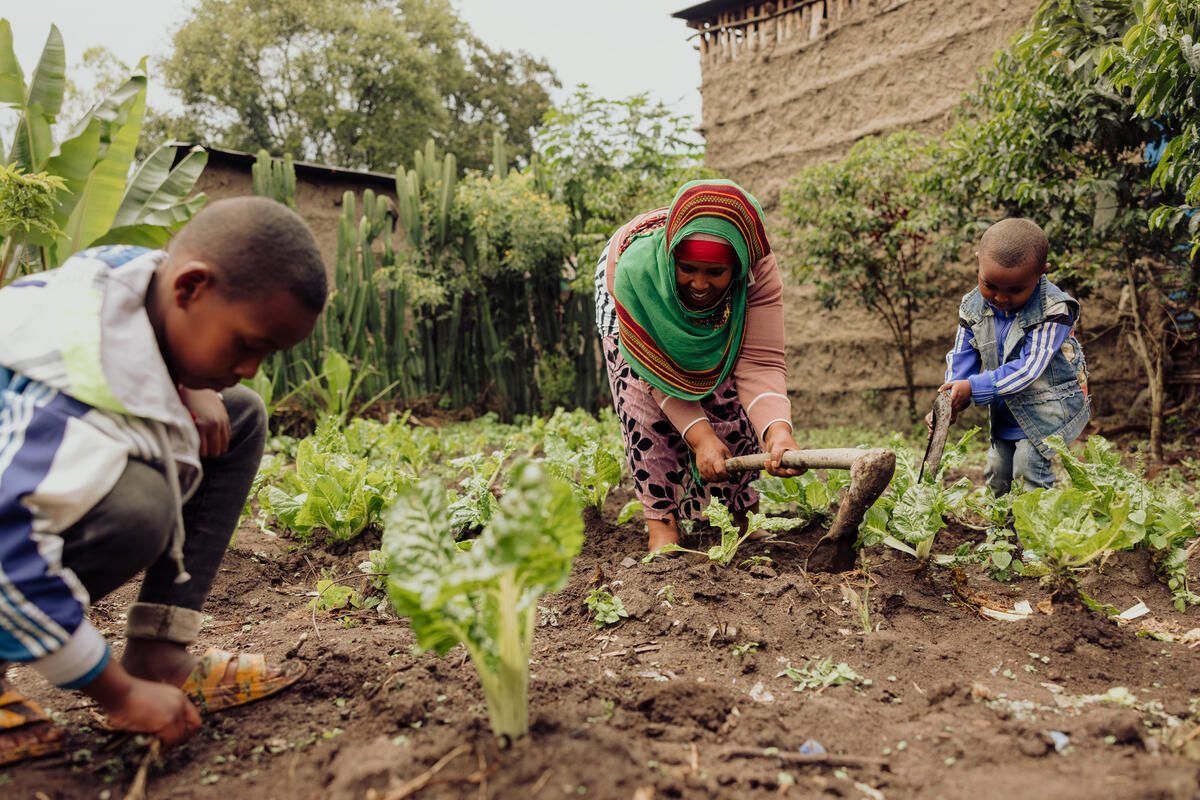Your 101 Guide to Global Food Production + Development

Have you ever wondered what it takes to get all that food to your supermarket?
The Reverend Martin Luther King Jr once said, “Before you finish eating breakfast in the morning, you’ve depended on more than half the world.”
The global food production market is a surprisingly delicate and interconnected structure. For those in countries with strong economies, it means a diversity of choices and competitive prices; we can choose what we want to eat and whether we’re going to buy local, imported, or organic cucumbers.
For people in less developed economies, the global nature of food production means a quite different situation – like being highly vulnerable to the price shocks and fluctuations of worldwide events well beyond their control. These price shocks are one of the reasons that in 2023 nearly 282 million people in 59 countries and territories experienced high levels of acute hunger – 24 million more than the previous year.
What do global production chains have to do with hunger?
There aren’t many countries in the world that are self-sufficient when it comes to food. This creates an interlocking, global maze of production and supply paths between food producers and food buyers.
Just think of all the factors that influence the price of food (its supply chain) before it gets to your house: land for agriculture, land for livestock, water for livestock, water for agriculture, fuel for electricity, petrol for tractors, petrol for ships/planes/trucks, fertiliser – and that’s just part of the loop. We might complain about a change in the price of bananas, but tiny fluctuations in the chain of production deeply affect people living in food-insecure countries.

What’s a food-insecure country?
According to the World Bank, a country is considered food insecure when its inhabitants don’t have regular access to sufficient, safe, and nutritious food to meet their dietary needs for an active and healthy life.
It’s hard for many of us even to imagine being hungry and not knowing where our next meal will come from. But for three in 10 people in the world, that’s a daily reality.
Why are food prices so unstable?
This is a spider’s web of interconnected issues. Global food production is still recovering from the shocks of 2020 when COVID-19 and its impacts gripped the globe. Lockdowns and outbreaks meant ships and planes couldn’t deliver fuel or transport food. Farm workers had to stay home, crops went bad, and packing staff couldn’t gather in warehouses to send food out. Prices went up.
The Ukraine conflict further compounded the global food supply chain crisis. Until February 2022, Ukraine was known as the “breadbasket of the world”, together with Russia supplying one-quarter of the world’s grain supply. In 2021, Ukraine produced about 80 million metric tonnes of grain, but it is expected to harvest less than half of that in 2024. Global fertiliser supplies have also been affected by sanctions on Russia and Belarus, sending food prices skyrocketing even further.
And then there’s climate change. The World Economic Forum reports that as far back as 2007, research found around 30% of year-to-year fluctuations in crops grown were due to changes in the climate. An increase in global temperatures will disproportionately impact countries already exposed to seasonal extremities – droughts will be longer and storms will be more destructive. In regions that rely on shared resources like water and grazing land, tensions over dwindling resources inevitably increase, often leading to conflict that further undermines food security.

What does all this mean for children?
Safe and reliable access to food and water are the cornerstones of a healthy life and a strong future.
When prices go up, families are pushed to make sacrifices so they can put food on the table. It begins with choosing more affordable, less nutritious food – meaning household health is put at risk. Poor nutrition in a newborn’s first years leads to stunting, poor development, and chronic and lifelong health issues. Any kind of illness affects a family’s ability to earn income.
The next cut is usually education – and girls are almost always taken out of school before boys. If the financial pressure persists, daughters are often pushed into early marriage for the short-term ‘windfall’ of a dowry, or simply to reduce the number of mouths to feed. The result is often more health challenges and generational poverty. As well as being catastrophic for the girl herself, lower levels of education reduce a country’s skilled workforce and weaken its economy.
OK. What are the solutions?
The good news is that the world produces enough food to feed everyone. When you sponsor a child, you help children survive the crises and you help their family get back on their feet.
1) Immediate, emergency help
Every 5 minutes, child sponsors help a hungry person receive emergency food and support for their family. We have been the World Food Programme’s largest implementing partner for two decades and work through established local networks to put specially designed nutrition packs and emergency rations into the hands of the children who need them most.
2) Support to recover
Every day last year, 4 more health workers were trained to help malnourished children make a full recovery with support from child sponsors. By training health workers and parents to spot the signs of malnutrition and know how to treat and prevent it, child sponsors help kids recover and grow healthy and strong. Learning what children need in a balanced diet and how to prepare nutritious, affordable meals with local ingredients is just as important for families as being able to get enough of the right food, and so it’s a key part of sponsorship programming too. Sponsors also provide clean water, regular health monitoring, psychological support and other essentials critical to children’s long-term recovery from hunger and other crises.
3) Partnership to build a more resilient future
Every 10 minutes last year, child sponsors helped provide farmers with seeds, livestock, tools, or equipment so they could leave hunger behind for good. Because sponsors partner with communities for up to 15 years to equip them to break the cycle of poverty, your support continues to help families long after the emergency phase is over. Sponsors help families find ways to grow more food, start small businesses, and earn more stable income so they can feed and provide for their children far into the future, building their resilience to global or local shocks.